Trendemon’s 2024 B2B Buyer Journey Report: Challenges & Trends
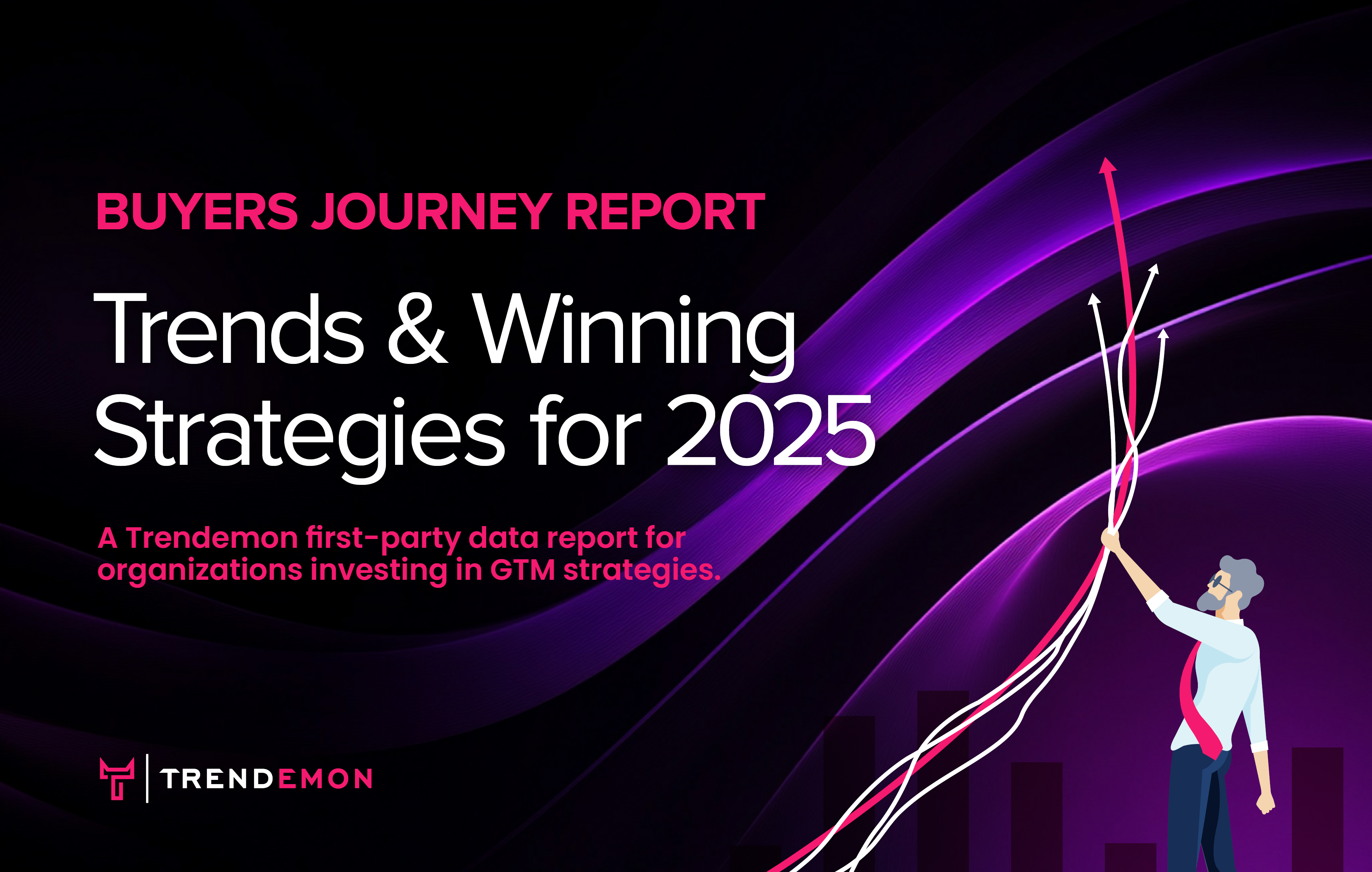
B2B marketing is harder than ever. More noise, more buyers involved in the process, and more complex buying journeys have posed a significant challenge for marketers to be effective. With the average B2B buying group now including at least 9-10 stakeholders, and a sales cycle that can last up to 11 months, B2B marketing is no longer tactical – it’s strategic and requires a complete mindset shift.
Our annual B2B buyer journey report is an attempt at cultivating this shift using data-driven insights obtained from actively monitoring the B2B journeys of 150 companies.
We’ve assessed millions of these journeys from 2023 – 2024, to understand key challenges marketers need to prep for in 2025 and trends to capitalize on for effective GTM motions.
Let’s dive in.
Finding 1: Marketers are on the offensive but conversions are taking a dive
2024 was a year of investments in growth strategies. We’ve seen a significant increase in ad spend across Google and LinkedIn, with the most investments on LinkedIn ads. And while the ads are driving traffic to the website, conversions aren’t adding up.
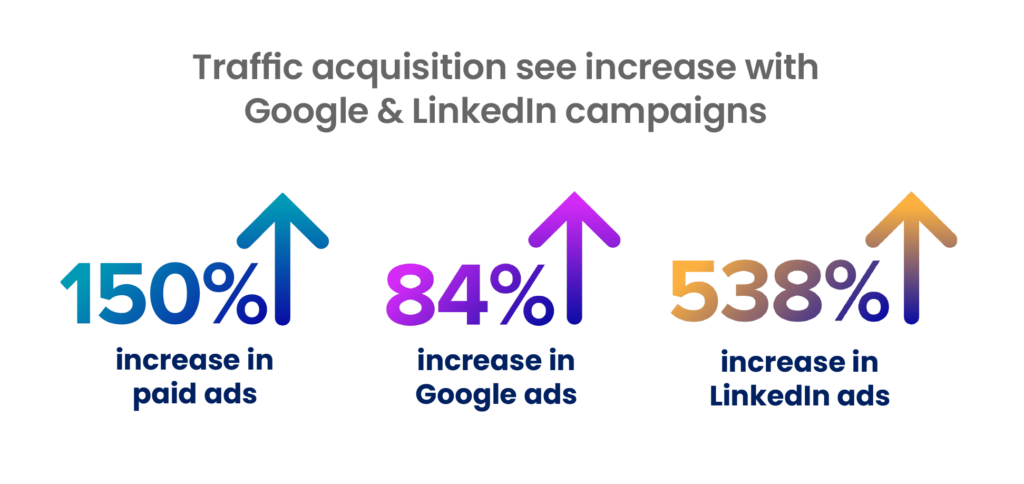
Companies are increasing ad spend more than ever with a specific focus on LinkedIn, however, there seems to be a disconnect between the volume of marketing efforts and their effectiveness.
This disparity is highlighted in the data where we can see conversion rates on the website have taken a nosedive, essentially meaning, buyers are visiting websites, but they are not engaging or converting at the level of investments being poured into ads.
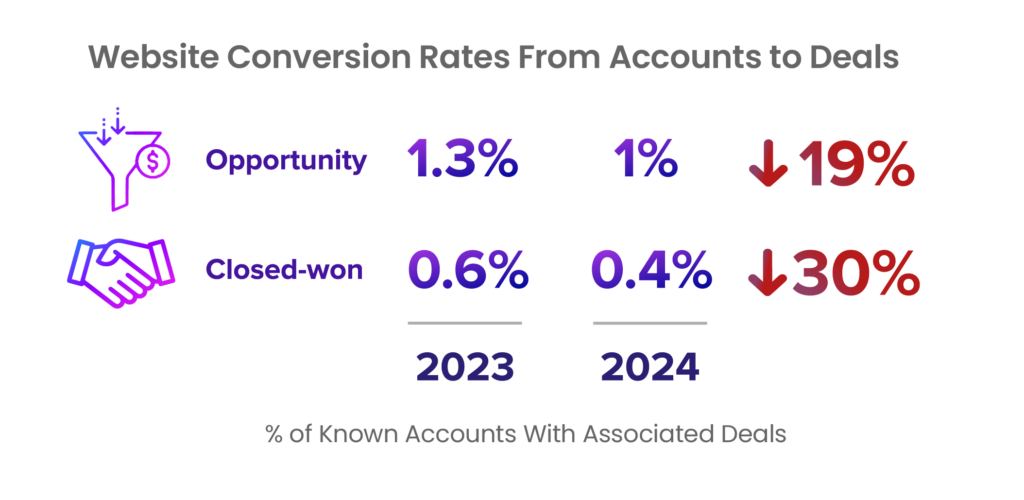
While marketers are pushing out more content and initiatives, buyers are navigating increasingly complex journeys, often engaging with multiple touchpoints before making a decision. This surge in volume without corresponding personalization and journey-based understanding is leading to a dilution of impact, resulting in lower conversion rates.
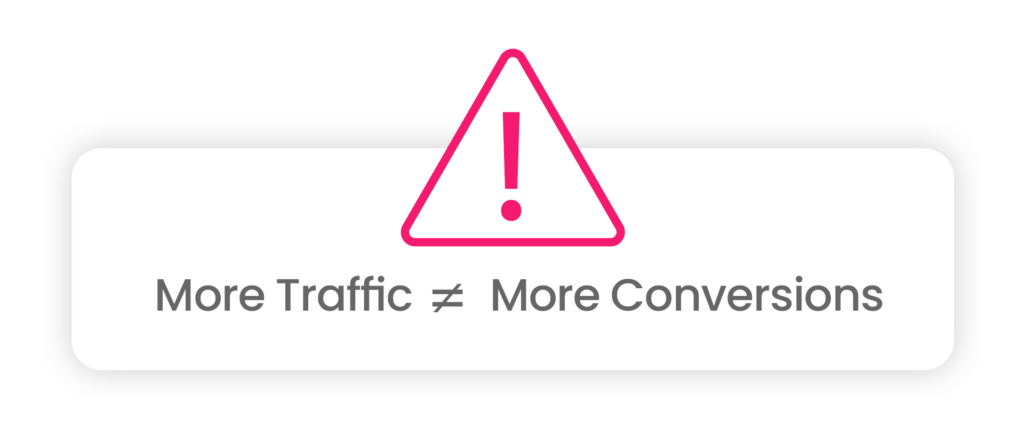
Finding 2: Buying Committees Have Fewer Engagement Sessions and Page Reads
Marketers often make this mistake of marking conversions as a successful attribute, ignoring engagements.
From the data, we can see that only 0.4% of website visitors become closed-won opportunities, while 52% of them drop out after the first page view.
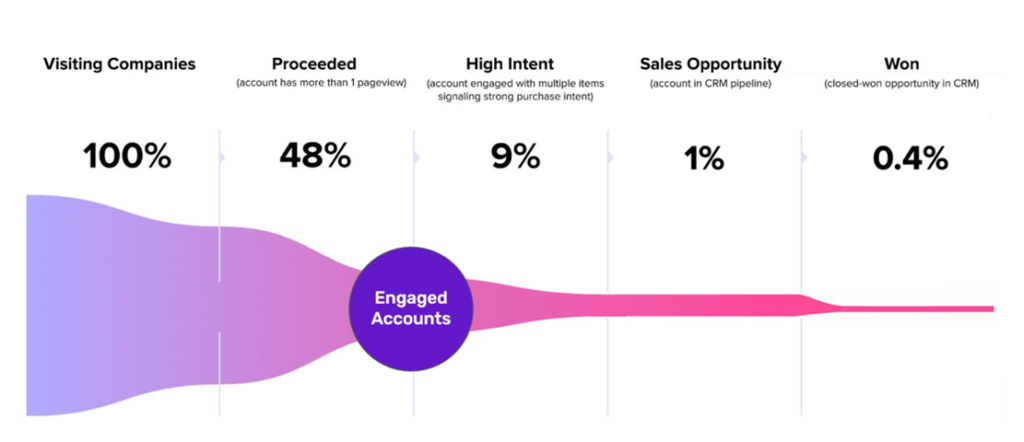
So if we’re measuring conversions as a success factor, we risk ignoring the other 52% of buyers who need to be prompted into engaging further with personalized and relevant content.
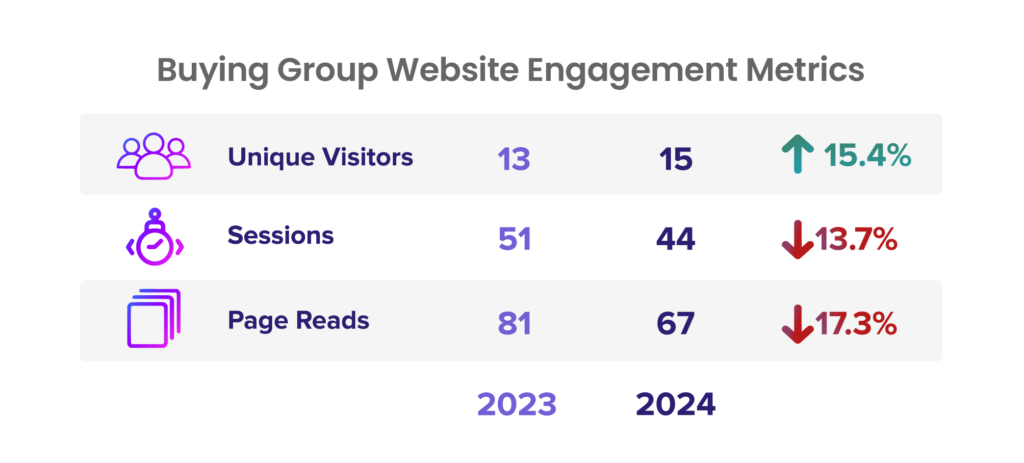
Here, as you can see, increased ad spend has resulted in unique visitors, but there’s a consistent drop with sessions and page reads.
We’re losing 52% of opportunities – and that is bad news.
Finding 3: Leads are a Lagging Indicator, Marking a Shift to Tracking Engaged Accounts
We marketers love counting leads!
But with B2B journeys becoming more account-based (consisting of multiple buyers instead of one buyer), using leads as a sole metric of successful marketing is no longer viable.
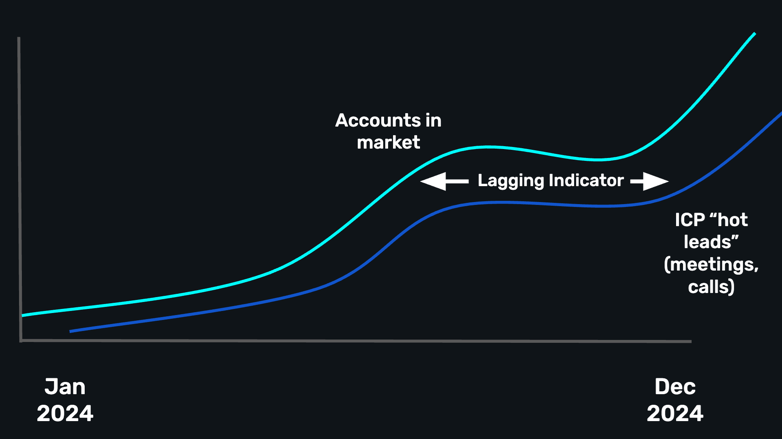
As the data indicates, the number of accounts in market has surged throughout 2024, yet the number of ICP “hot leads” (meetings, calls) lags behind. This lag represents the delay between when an account starts engaging and when it actually becomes a sales-qualified lead. By the time an account raises its hand, their decision-making process is already well underway.
The way we track demand is fundamentally flawed. But what else do we track if not MQLs?
Maybe it’s time to reflect on tracking engaged qualified accounts – which unlike leads, emerge earlier in the buyer’s journey. EQAs act as a leading indicator—a predictor of which accounts are actively researching, engaging, and moving toward a purchase decision.
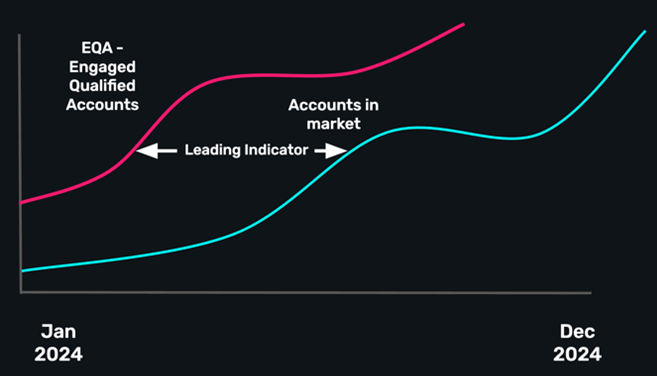
As easy as this sounds in theory, measuring EQAs in a complex B2B environment requires having a serious conversation with leadership teams and stakeholders. The goal is not to ignore or replace the lead gen funnel, but to move strategically towards using EQAs as a measure of effectiveness instead of how many leads entered the pipeline. Smart GTM motions are not about replacing one over the other, but deploying multiple motions simultaneously to reach desired impact.
Finding 4: Increased Anonymity and Reduced Attention Spans
This isn’t breaking news.
We’ve been monitoring website behaviors over the past two years and we are certain that the decline in conversions can be attributed to buyers’ preference for increased anonymity (explaining the low conversion rate) and reduced attention span (explaining the reduced engagement).
Your beautifully crafted content has roughly 8 seconds to make an impression before a buyer decides whether to engage or bounce.
With AI churning out content at unprecedented rates, standing out requires more than volume – it requires relevance. The paradox? We’re creating more noise while simultaneously complaining that our signals aren’t getting through.
Finding 5: Personalization is driving conversions!
Who would have thought?
Marketers have been touting personalization for years, but have always had little success owing to the complexity of setting up personalized workflows and experiences.
Over the last year, we’ve seen customers implementing personalization initiatives which increase engagement and conversion rates exponentially.
Implementing basic content personalization, such as recommendations on relevant content to different buyers in an account resulted in a 448% increase in overall goal conversion rates!

Sounds too good to be true?
Here’s a detailed case study of Perforce, a customer who saw an immediate rise in conversion rates as soon as they implemented personalized recommendations at different touchpoints in the online journey.
If you’re not already thinking about personalization, you may be losing out on 52% of opportunities!
How to Win with B2B Marketing in 2025?
In 2025, the key to overcoming the challenges of increased anonymity, shrinking attention spans, and the need to identify engaged qualified accounts lies undeniably in personalization.
While many marketers offer tactical solutions like better content or data analysis, these efforts fall flat without a foundation of tailored experiences. True success hinges on tracking EQAs, leveraging first-party data to de-anonymize visitors, personalizing every touchpoint, and transforming websites into dynamic, consultative platforms.
By focusing on multi-touch engagement rather than singular lead captures, and by dynamically adapting content based on visitor behavior, businesses can move beyond generic outreach and create genuine connections. It’s not just about producing more content; it’s about delivering the right content, to the right people, at the right time, driving significant increases in engagement and conversion rates.
To truly capitalize on these insights and implement effective personalization strategies, Trendemon offers a complete personalization tool equipped with account deanonymization technology, channel performance tracking, content personalization and performance tracking as well as a visual experience of the B2B buyer journey.
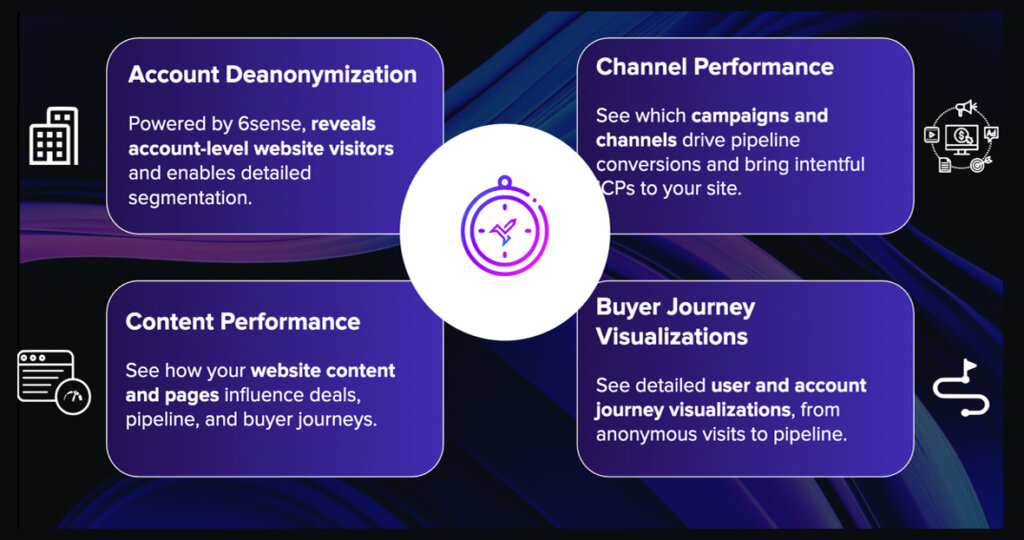
Stop relying on lagging indicators like simple lead counts and start focusing on the real drivers of revenue. Discover how Trendemon can help you achieve the 208% increase in engagement and 448% boost in conversion rates that personalized marketing delivers. Explore the Trendemon dashboard for free and start improving your conversion outcomes.